Tech has set records for job postings, but companies face a shortage of workers for key positions. A recent ManpowerGroup survey revealed that 90% of employers are experiencing difficulty finding qualified applicants to fill their open positions. The paradox? Talent is available, but job descriptions are not reaching them.
In a marketplace in which candidates think and act like consumers, it just doesn’t work to have old or bad job descriptions. The lack of specific buzzwords, clear expectations, and aligned messaging is silently pushing top talent away, especially out there in very competitive areas like software development, product design, and AI engineering.
At a time when the market for specialized tech skills is surging, companies are no longer able to treat job descriptions like an afterthought. That’s where AI is beginning to rock the boat, rewriting not just the words, but the hiring experience itself. From role–personal alignment to tone customization and bias-free language, AI is enabling businesses to talk like the talent they want to recruit.
In this post, we’ll be exploring why typical job descriptions are missing the mark and how AI can be used to get the right people in the door faster and smarter for tech companies.
Limitations Of Conventional Job Descriptions
Even the best-meaning job descriptions suffer if they use obsolete writing tools or do not support automation. Standard human-written listings often lack such strategic focus and consistency to appeal to top talent in a competitive job market.
Here are a few important limitations that make traditional job descriptions less powerful — and how they can quietly sabotage your hiring efforts.
- Task Focused
Many job descriptions are unable to draw in the right applicants because they focus too much on tasks and don’t feature the essential skills it takes to be great at the job. It’s a task-oriented approach that often results in uninspiring job posts that won’t tell anyone what success looks like in the role.
For the sake of argument, say you’re trying to hire a project manager. A standard job description might have responsibilities like tracking deadlines or maintaining project trackers. But what about vital skills such as managing stakeholders, resolving conflicts, budgeting, or leadership? These are the skills that make top performers, and they’re often left out of the narrative.
By overlooking important soft and hard skills instead of daily chores, companies can end up getting candidates who can “do the job” but may not excel or have the capacity to adapt to the role. In today’s fast-paced job market, skills-based recruitment is no longer a choice; it’s a strategic imperative.
- Inconsistencies
Inconsistent job descriptions can disrupt your hiring process by confusing potential applicants and watering down your brand.
For example, if one job posting for a software engineer requires a lot of emphasis on coding and technical certifications, while another emphasizes collaboration and effective communication, applicants might find themselves confused about what the organization actually values. This type of mixed messaging not only dilutes the quality of applications but also colors the minds of top-flight talent when they consider your company. To win over the best candidates, you need to have a consistent tone, structure, and focus throughout all job listings.
- Limited Scalability
Relying solely on human writers to create job descriptions makes it difficult to scale your recruitment efforts, especially when you’re hiring for multiple roles at once. Crafting tailored, high-quality listings for dozens of positions can quickly overwhelm even a well-resourced HR team. In contrast, AI-powered tools offer a scalable solution by generating consistent, role-specific job descriptions in minutes. This allows companies to keep up with high-volume hiring demands without compromising on quality or efficiency.
- Reused Content
Reusing human-written job descriptions without regular updates can lead to outdated or irrelevant content that no longer aligns with the current role, team structure, or industry expectations.
For example, a job listing created two years ago may still mention tools or responsibilities that are no longer in use, confusing candidates and reducing your credibility as an employer. This kind of repetition not only weakens candidate engagement but also signals a lack of attention to detail. To attract top talent, job descriptions must be timely, accurate, and aligned with today’s hiring landscape.
Example Of A Bad Vs Effective Job Description
When it comes to attracting top talent, the quality of your job description can make or break your hiring efforts. A vague, uninspired listing might turn away the best candidates, while a clear, engaging, and impact-driven one will draw them in. Let’s take a look at a side-by-side example of a bad and an effective job description for a Project Manager role.
Bad Job Description: Project Manager (Before)
Job Title: Project Manager
Responsibilities:
- Maintain trackers
- Manage timelines
- Conduct meetings
- Coordinate between departments
Requirements:
- 5+ years of experience
- Knowledge of project management tools
- Must be a team player
What’s wrong?
- Vague and uninspiring
- Overly task-focused
- No mention of leadership, decision-making, or impact
- Generic buzzwords like “team player” don’t say much
Effective Job Description: Project Manager – Digital Solutions (After)
We’re searching for a strategic and ambitious Project Manager to steer cross-functional groups to deliver meaningful digital solutions. The role is best suited to individuals who enjoy a fast pace of work where there is a strong emphasis on linking business goals to project delivery and are motivated to deliver great outcomes.
Key Responsibilities:
- Own and manage multiple projects end-to-end, from initiation through delivery, all being delivered on time, within scope, and on budget.
- Work with product, design, and engineering leadership to establish goals, KPIs, and timelines.
- Pinpoint risks early, work through obstacles, and use data to make decisions that keep projects on track.
- Drive continual improvement by improving internal processes and by contributing to standards, best practices, policies, procedures, and guidelines.
- The report presents status, insights, and strategic recommendations to both internal management and clients.
What You Bring:
- 5+ years of proven experience in hands-on project or program management, preferably in tech or digital services.
- Experience with tools such as Jira, Asana, or Trello and knowledge of Agile & Scrum methods.
- Leadership, communication, and negotiation skills-strong ability to rally teams and influence outcomes.
- Ability to dissect complex problems and turn ambiguity into action.
- Collaborative spirit and seeing work through that makes a difference.
How AI Can Help You Write Better Job Descriptions?
Writing a job description that attracts top-tier talent isn’t just about listing responsibilities; it’s about clarity, alignment, and smart targeting. This is where AI proves to be a game-changer. From analyzing real-time data to tailoring your tone and boosting visibility, here’s how AI can help you craft job posts that work.

- Streamlined Data Collection
Creating good job descriptions is one of the hardest parts of the hiring process, and collecting reliable, real-time data on what the role requires, particularly when that data comes from a variety of teams or hiring managers, is no easy task. AI-enabled tools make this process simple by gathering and processing data from multiple internal sources such as performance appraisals, feedback on team performance, and job-wise analysis.
For instance, instead of using a general software developer template, AI uses statistical analysis to find commonalities among your organization’s best hires, pull out core skills from live project data, and craft a hyper-relevant role-relevant opening that covers both your technical requirements and team environment. This evidence-based method allows you to write job postings that are not just in line with industry standards, but are also adapted to your real business requirements — the result: better candidates in less time.
- SEO Optimization
One reason job listings fail is that they are not visible — if the right people can’t find your listing, they won’t apply. This is where AI comes in. Today’s AI software can analyze how candidates search for jobs online and automatically optimize job descriptions for search engines accordingly. For example, an AI suggests swapping “marketing ninja” for “digital marketing executive” to more accurately reflect actual keyword trends.
Whether you’re recruiting for a niche post or high-volume jobs, AI can assist you in surfacing relevant keywords, matching content to search intent, and increasing the likelihood of your job listing ranking on job boards and search engine result pages. The result? More potentially qualified applicants and fewer opportunities missed.
- Personalized Job Descriptions
Every company has a different culture, tone, and method of communication, and your job descriptions should be a reflection of that. If you’re leveraging AI tools, however, personalizing listings to make them sound like you vs. generic job board boilerplates is easier than ever. By training AI on your company’s previous job posts, website content, and internal messaging, it can mimic your tone of voice while tailoring the content for different roles.
For instance, a startup looking to hire a UX designer likely wants a casual, creative voice, whereas a law firm advertising for a compliance officer may require something proper and exact. This level of personalization keeps messaging consistent across all touchpoints and reinforces your employer brand, attracting only the talent that shares the same values and vibe as your organization.
- Enhanced Scalability
One of the most impressive benefits of AI for job descriptions is that it learns over time and improves with each iteration. Rather than post static listings that can quickly become listings, AI enables hiring teams to optimize job posts based on live performance data, such as click-through rates, candidate quality, or drop-off points.
If a job posting isn’t drawing the right applicants, HR professionals can change the tone, keywords, or qualifications based on AI insights. The ongoing investment in refining ensures your descriptions change with hiring trends and market expectations, keeping them relevant, targeted, and effective not once, but every time you post.
Limitations Of AI In Writing Job Descriptions
While AI brings undeniable benefits to job description writing, it’s not without its flaws. Understanding these limitations is crucial to ensuring your hiring process remains inclusive, accurate, and human-first.
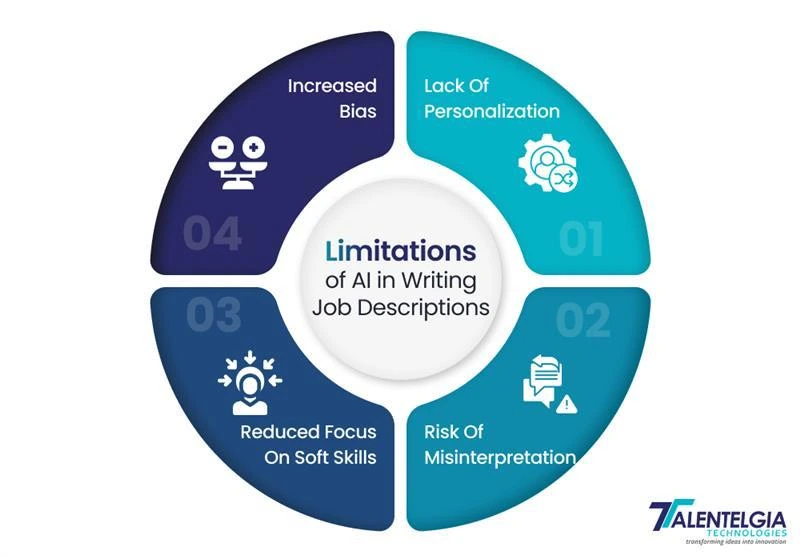
Let’s break down some of the key challenges you need to watch out for:
- Limited Creativity
Job descriptions generated by AI are often unoriginal. Since the tools are meant to mimic patterns in real samples, the resulting list of responsibilities tends to be predictable and not so vibrant as it would be in a real job posting. AI is not creative — it does not access emotion, instinct, or human experiences in a way that brings writing alive. As a result, your job posting can read like so many others online, failing to make the impression that it could. If your endgame is to get top talent excited about applying, then relying solely on AI may undermine the creativity your role demands.
- Risk Of Misinterpretation
AI can be a potent sidekick when you’re making job descriptions, but only if you do it the right way. One of the most under-discussed challenges? There is also the problem of wrong explanations caused by unclear or incomplete input.
AI functions on commands; what you put in is what you will get. If your prompt is vague, unclear, or doesn’t specify a role for this dialogue, the dialogue might be good, but ultimately not accurate. This can lead to:
- Misleading role expectations
- Confusion around responsibilities
- Irrelevant skills or qualifications listed
- A voice that doesn’t match your employer’s brand
That’s also why, in some cases, deferring completely to A.I. without the human in the loop can come back to haunt us.
Before you release an AI-enhanced job description on the world, read and edit to ensure quality. Ask yourself:
- Is this an accurate portrayal of the role?
- Is anything missing or overstated?
- Would a promising candidate feel inspired or confused?
- Reduced Focus On Soft Skills
Artificial intelligence can do an excellent job at summarizing technical requirements, but in branding, the true essence of soft skills and hands-on expertise, it’s not successful. Shopworn words like “strong communication skills” or “problem-solving abilities” may check the box, but they don’t pack much punch.
And that’s a problem, particularly in roles where nuance counts for in.
Let’s break it down:
Consider what they might write if they were to post a job description for a metal garage builder. Now, imagine writing one for a software engineer. You’d never — and never should — use the same language. But AI-generated descriptions frequently mix them up, failing to capture the real-world context that connects each role.
Blue-collar trades that lack specificity can be expensive. Candidates need clarity on:
- Physical requirements, such as endurance, strength, and weather conditions for outdoor work
- Experience working with tools or machinery, or with material
- Real Life Problem solving, not bits and pieces theory.
- On-the-job resourcefulness: Improvisation matters more than spreadsheets
If the role isn’t, you’re not only not maximizing the “sell” factor of the role, you’re attracting the wrong talent.
- Increased Bias
AI has the potential to simplify the hiring process, or it can unwittingly perpetuate the bias if not deployed responsibly.
Here’s the truth: AI reflects the data it is trained on. If that training data skews toward a certain gender, age, or region, and you’re not more human than your AI yet, your AI-created job description may quietly reverberate those biases, whether you know it or not. That includes the kind of quiet exclusions, in language, in tone, in phrasing, that can deter perfectly good candidates, and that can undermine your DEI objectives, along with EEOC guidelines.
And bias isn’t always obvious.It is not just about adopting gender-neutral job titles or trading “he” for “they.” That unconscious bias also can seep in through the tiniest of word choices. A 2024 poll from The Muse discovered that 38% of women opted out of applying for jobs, purely based on a belief of gender discrimination, before even talking to a recruiter.It’s talent gone with the first click.
Using A.I. to Transform Classroom Learning:
- Always vet by humans who know the complexity of language and inclusivity.
- Use DEI-centered writing tools to alert you to biased or exclusionary wording.
- Cross-reference with privacy and compliance frameworks such as GDPR and EEOC standards.
- Test your descriptions with a variety of internal teams before releasing them.
Top AI Tools For Writing Job Descriptions
With so many AI-powered platforms now available, choosing the right one can make a real difference in how effective—and human—your job descriptions feel. Whether you’re hiring globally, fighting bias, or simply short on time, these top tools can help you level up your hiring game:
- DataPeople
Want to create diverse, high-impact job descriptions without manual effort?
Datapeople combines science, structure, and diversity throughout every line of your hiring content, so your job ads are precision tools for talent.
Think of it as your bias-busting, language-savvy hiring assistant—powered by over 100 million job posts and real-life hiring data.
Benefits of Using Data People:
- Remove bias from your language: Datapeople smartly calls out gendered, exclusive, and outdated language and helps you maintain your commitment to DEI best practices and compliance.
- Increase readability: For recruiting from hardcore warriors and sharpshooters to sly developers and wise wizards, we make your job ninja-clear and ready to fight, and not turn into a legal filler text on black sorcery!
- Conform to hiring standards: The tool cross-references your description with industry standards today to ensure you are not asking for 15 years of experience in a 5-year-old tech.
- Built-in templates & job libraries: Save time and ensure brand consistency with pre-built templates that match your tone and hiring goals.
- Custom brand guides: Define tone, language, and format so every job represents your employer brand.
- Remain compliant: Guarantee that your listings are in line with pay transparency laws, DEI requirements, and employer value proposition (EVP) requirements.
- Optimizing hiring funnels: Increase candidate conversion in each job ad, making them more relevant, inclusive, and impactful.
Results?
- 50% less effort in creating job descriptions
- 200% increase in job performance metrics
- 30% faster hiring cycles
- Recooty
Would you like to search for talents across borders easily without any language barriers? Recooty is an AI-powered, specialized hiring assistant built for global stages. A start-up to a scaling enterprise, we make it easy and seamless for you to host or attend recruitment remotely, regardless of your team or location.
From writing a job description in 200+ languages to conducting interviews and onboarding flows, Recooty helps you to hire smarter, wherever your talent is.
Top Features of Recooty:
- Multilingual job descriptions: Attract a global audience with listings in over 200 languages—from Spanish and Mandarin to Swahili and Zulu.
- Artificial intelligence-driven interview question generator: Generate role-specific, modern interview questions that avoid outdated cliches.
- Streamlined onboarding: Make your new hires feel welcome with integrated onboarding tools that help you set the tone.
- Easy, minimalistic, and beginner-friendly UX: Recooty is built for HR professionals and first-time founders in particular.
- Intuitive, beginner-friendly UI: Whether you’re an HR pro or a new founder, Recooty’s platform is built for simplicity and speed.
Why Recooty Stands Out?
- Source talent from around the world with culturally and linguistically relevant job postings
- Slash hiring time by automating and improving the candidate experience
- Make your brand accessible and appealing to a truly global workforce
- Workable
Workable is more than just an ATS; it’s a robust hiring platform that features one of the most advanced AI-driven job description writers available. With 200+ job board integrations, AI sourcing, and tone ratings shared from your team, it adds smart and consistent reach to your hiring process.
Key Features:
- Template + tone library: Browse and assign from an extensive library and match the tone to the role or department.
- 200+ global and social network job boards: Post across the web to hundreds of sites with just one click.
- LinkedIn & Indeed integrations: As a Preferred Partner, Workable increases the visibility of your ads.
- Passive candidate sourcing: Access over 400M profiles and automatically reach out to candidates.
- Referral tools & career page builder: Create a branded experience that draws in and converts.
Pro Tip:
Customize tone by the department. Your ads for tech and marketing work shouldn’t be carbon copies of one another.
- Easy-Peezy.AI
What if you need job descriptions that cross borders?
Easy-Peasy.AI is your shortcut to beautiful, multilingual, hyper-targeted job ads created within mere clicks. Powered by advanced AI, this is your tool for speaking the language of talent—figuratively, as well as literally.
Regardless of whether you’re recruiting at a small satellite office or hiring a fully remote team from other corners of the world, Easy-Peasy. AI guarantees your message is always sharp, localized, and on brand.
Key Features:
- 40+ language support: Customize the language in job descriptions to communicate with global candidates by making your jobs more inclusive and accessible.
- State-of-the-art AI models: Leveraging the next-gen language generation tools for sharp, professional, and role-based content.
- Tailorable: Set tone, structure, and role expectations to be company culture, department, and location-specific.
Pro Tip:
Use Easy-Peasy. AI to localize job descriptions for your international offices. It’s as if you also had a 24/7 in-house recruiter in each time zone without the travel costs.
Conclusion
In a talent-driven market where top candidates think like consumers, AI-powered tools are revolutionizing the way companies write job descriptions, turning them from static, task-heavy documents into strategic, personalized, and scalable assets that resonate. While AI offers unmatched advantages in speed, consistency, and SEO optimization, its success hinges on human oversight to ensure authenticity, cultural alignment, and role clarity. The future of hiring belongs to organizations that blend the precision of AI with the intuition of human judgment, crafting job posts that attract not just applicants, but the right ones.


 Healthcare App Development Services
Healthcare App Development Services
 Real Estate Web Development Services
Real Estate Web Development Services
 E-Commerce App Development Services
E-Commerce App Development Services E-Commerce Web Development Services
E-Commerce Web Development Services Blockchain E-commerce Development Company
Blockchain E-commerce Development Company
 Fintech App Development Services
Fintech App Development Services Fintech Web Development
Fintech Web Development Blockchain Fintech Development Company
Blockchain Fintech Development Company
 E-Learning App Development Services
E-Learning App Development Services
 Restaurant App Development Company
Restaurant App Development Company
 Mobile Game Development Company
Mobile Game Development Company
 Travel App Development Company
Travel App Development Company
 Automotive Web Design
Automotive Web Design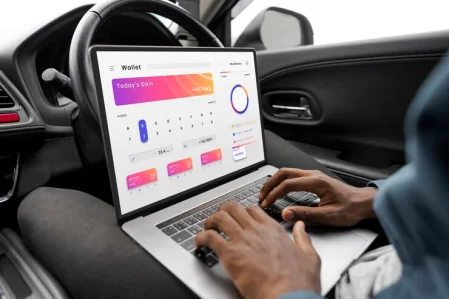
 AI Traffic Management System
AI Traffic Management System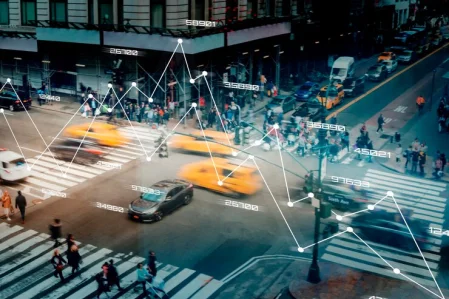
 AI Inventory Management Software
AI Inventory Management Software
 AI Software Development
AI Software Development  AI Development Company
AI Development Company  AI App Development Services
AI App Development Services  ChatGPT integration services
ChatGPT integration services  AI Integration Services
AI Integration Services  Generative AI Development Services
Generative AI Development Services  Natural Language Processing Company
Natural Language Processing Company Machine Learning Development
Machine Learning Development  Machine learning consulting services
Machine learning consulting services  Blockchain Development
Blockchain Development  Blockchain Software Development
Blockchain Software Development  Smart Contract Development Company
Smart Contract Development Company  NFT Marketplace Development Services
NFT Marketplace Development Services  Asset Tokenization Company
Asset Tokenization Company DeFi Wallet Development Company
DeFi Wallet Development Company Mobile App Development
Mobile App Development  IOS App Development
IOS App Development  Android App Development
Android App Development  Cross-Platform App Development
Cross-Platform App Development  Augmented Reality (AR) App Development
Augmented Reality (AR) App Development  Virtual Reality (VR) App Development
Virtual Reality (VR) App Development  Web App Development
Web App Development  SaaS App Development
SaaS App Development Flutter
Flutter  React Native
React Native  Swift (IOS)
Swift (IOS)  Kotlin (Android)
Kotlin (Android)  Mean Stack Development
Mean Stack Development  AngularJS Development
AngularJS Development  MongoDB Development
MongoDB Development  Nodejs Development
Nodejs Development  Database Development
Database Development Ruby on Rails Development
Ruby on Rails Development Expressjs Development
Expressjs Development  Full Stack Development
Full Stack Development  Web Development Services
Web Development Services  Laravel Development
Laravel Development  LAMP Development
LAMP Development  Custom PHP Development
Custom PHP Development  .Net Development
.Net Development  User Experience Design Services
User Experience Design Services  User Interface Design Services
User Interface Design Services  Automated Testing
Automated Testing  Manual Testing
Manual Testing  Digital Marketing Services
Digital Marketing Services 
 Ride-Sharing And Taxi Services
Ride-Sharing And Taxi Services Food Delivery Services
Food Delivery Services Grocery Delivery Services
Grocery Delivery Services Transportation And Logistics
Transportation And Logistics Car Wash App
Car Wash App Home Services App
Home Services App ERP Development Services
ERP Development Services CMS Development Services
CMS Development Services LMS Development
LMS Development CRM Development
CRM Development DevOps Development Services
DevOps Development Services AI Business Solutions
AI Business Solutions AI Cloud Solutions
AI Cloud Solutions AI Chatbot Development
AI Chatbot Development API Development
API Development Blockchain Product Development
Blockchain Product Development Cryptocurrency Wallet Development
Cryptocurrency Wallet Development About Talentelgia
About Talentelgia  Our Team
Our Team  Our Culture
Our Culture 
 Healthcare App Development Services
Healthcare App Development Services Real Estate Web Development Services
Real Estate Web Development Services E-Commerce App Development Services
E-Commerce App Development Services E-Commerce Web Development Services
E-Commerce Web Development Services Blockchain E-commerce
Development Company
Blockchain E-commerce
Development Company Fintech App Development Services
Fintech App Development Services Finance Web Development
Finance Web Development Blockchain Fintech
Development Company
Blockchain Fintech
Development Company E-Learning App Development Services
E-Learning App Development Services Restaurant App Development Company
Restaurant App Development Company Mobile Game Development Company
Mobile Game Development Company Travel App Development Company
Travel App Development Company Automotive Web Design
Automotive Web Design AI Traffic Management System
AI Traffic Management System AI Inventory Management Software
AI Inventory Management Software AI Software Development
AI Software Development AI Development Company
AI Development Company ChatGPT integration services
ChatGPT integration services AI Integration Services
AI Integration Services Machine Learning Development
Machine Learning Development Machine learning consulting services
Machine learning consulting services Blockchain Development
Blockchain Development Blockchain Software Development
Blockchain Software Development Smart contract development company
Smart contract development company NFT marketplace development services
NFT marketplace development services IOS App Development
IOS App Development Android App Development
Android App Development Cross-Platform App Development
Cross-Platform App Development Augmented Reality (AR) App
Development
Augmented Reality (AR) App
Development Virtual Reality (VR) App Development
Virtual Reality (VR) App Development Web App Development
Web App Development Flutter
Flutter React
Native
React
Native Swift
(IOS)
Swift
(IOS) Kotlin (Android)
Kotlin (Android) MEAN Stack Development
MEAN Stack Development AngularJS Development
AngularJS Development MongoDB Development
MongoDB Development Nodejs Development
Nodejs Development Database development services
Database development services Ruby on Rails Development services
Ruby on Rails Development services Expressjs Development
Expressjs Development Full Stack Development
Full Stack Development Web Development Services
Web Development Services Laravel Development
Laravel Development LAMP
Development
LAMP
Development Custom PHP Development
Custom PHP Development User Experience Design Services
User Experience Design Services User Interface Design Services
User Interface Design Services Automated Testing
Automated Testing Manual
Testing
Manual
Testing About Talentelgia
About Talentelgia Our Team
Our Team Our Culture
Our Culture

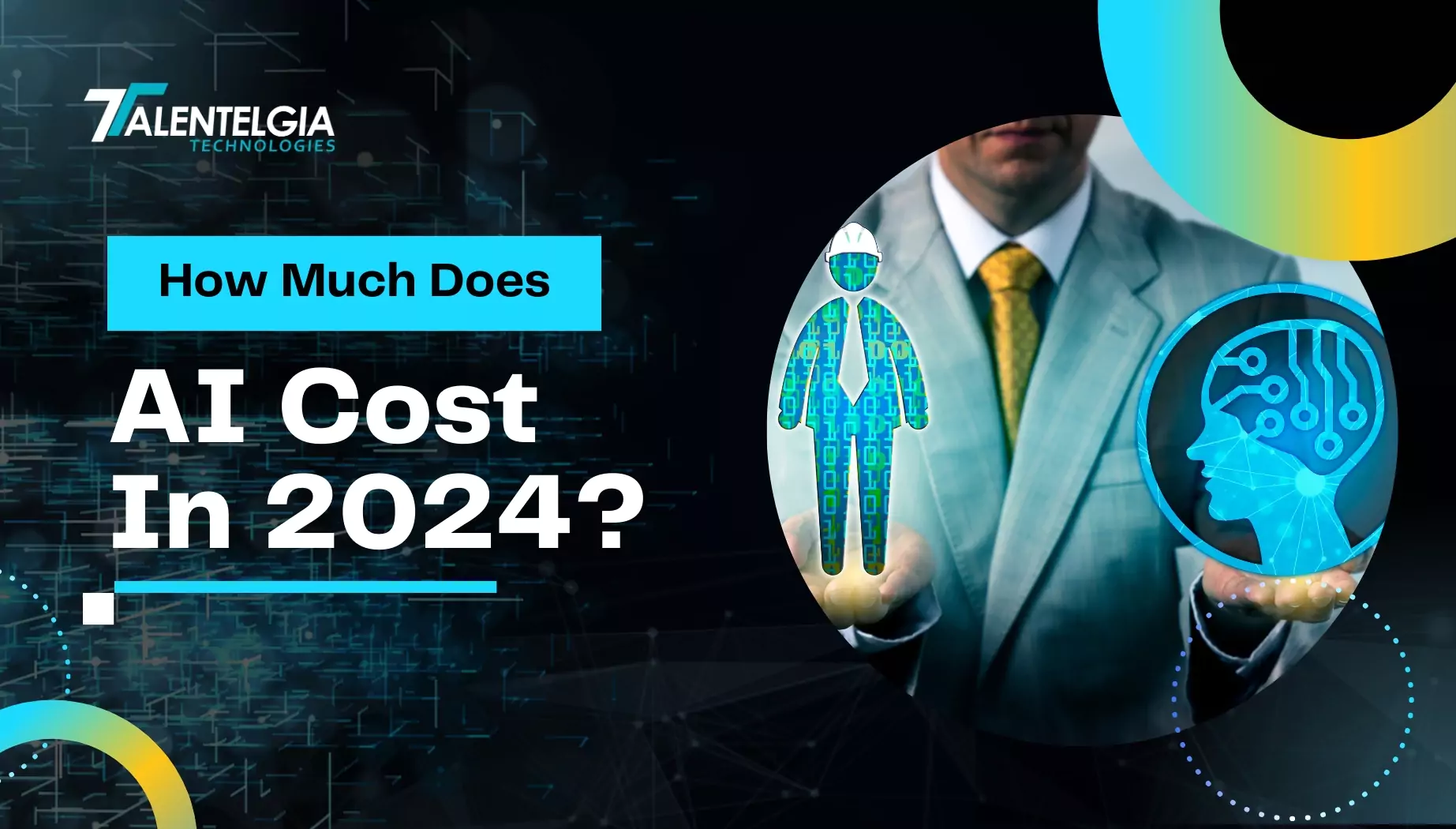

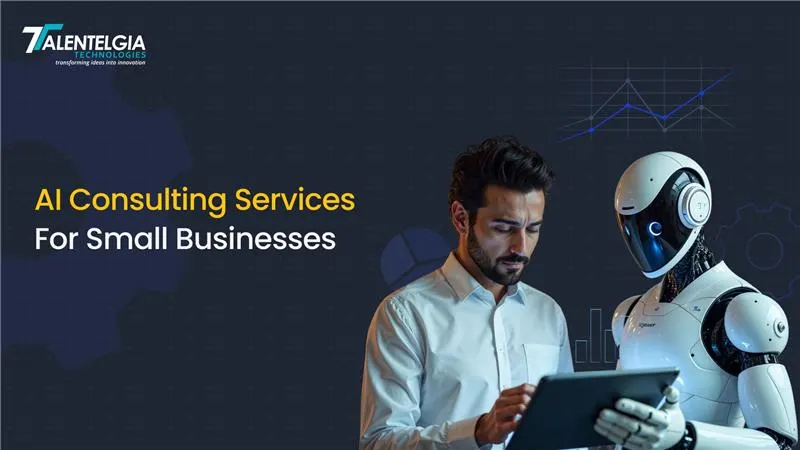

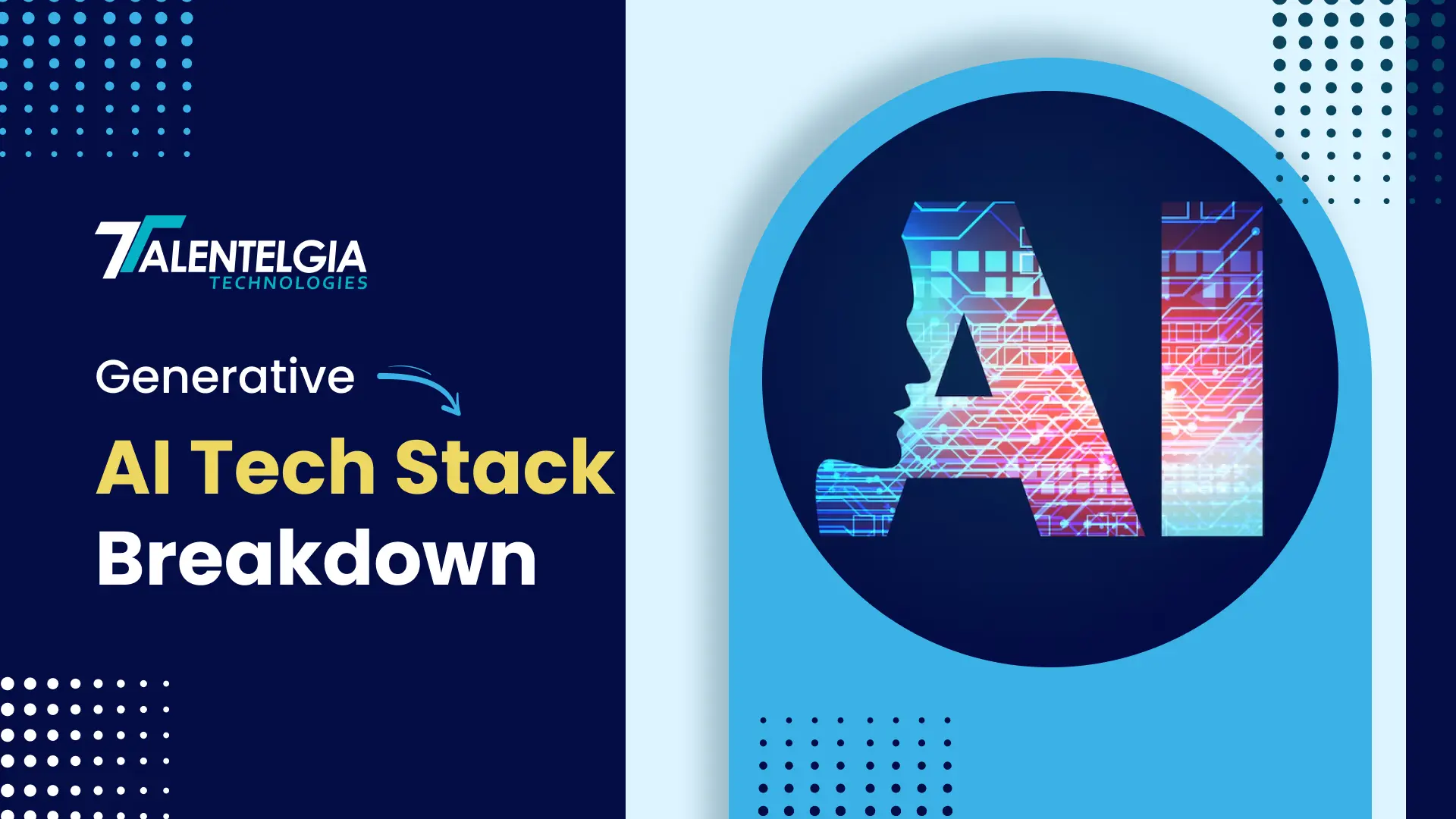










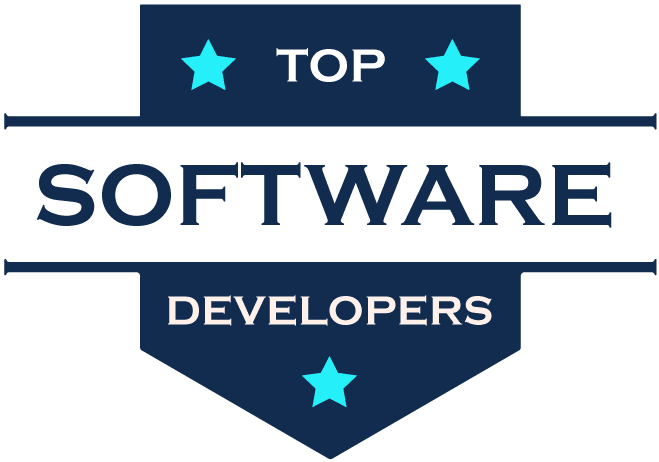
 Write us on:
Write us on:  Business queries:
Business queries:  HR:
HR: 




